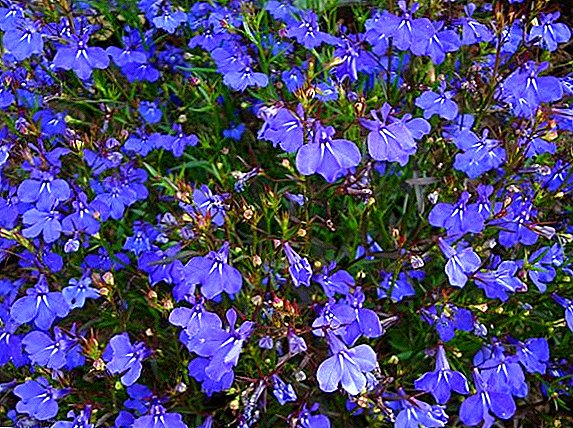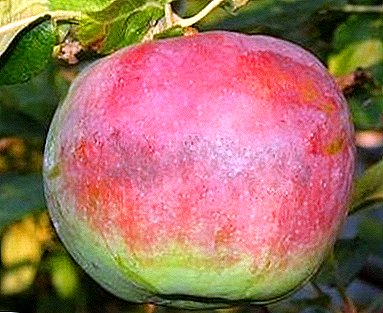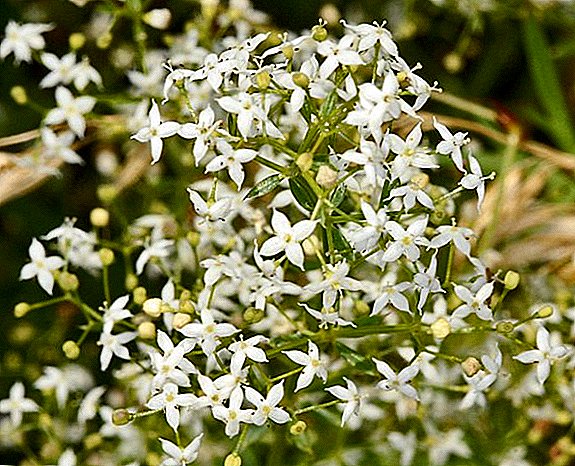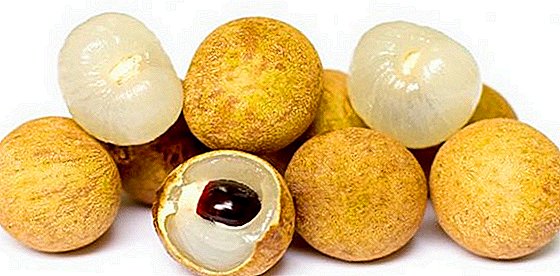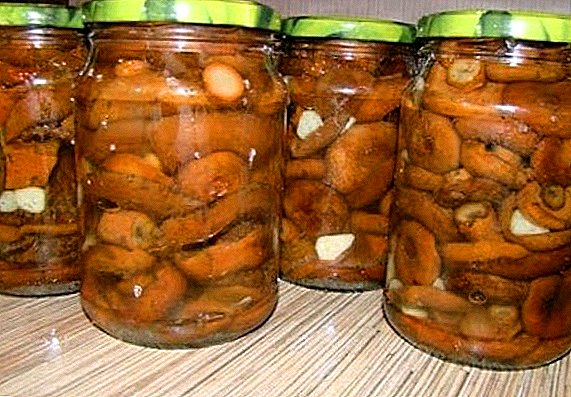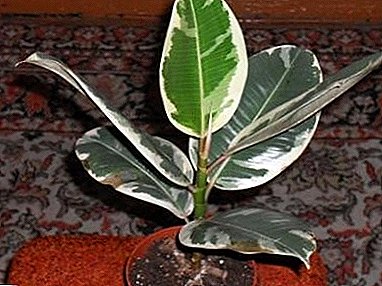
Under natural conditions, this ancient species of ficus, formed more 41 million years agogrows in northeastern Australia and reaches an exceptionally large size - up to 60 meters high.
It is used in landscape and park landings in Australia, New Zealand, California, Italy and Portugal, and requires large spaces, since its roots (air and underground) cover vast areas.
In room culture large-leaved ficus rather unpretentious and care at home does not present any particular difficulties, except for the need to regularly and strictly restrict growth.
Home care
Lighting
Bright light is required. The best will be the lighting, which provides windows facing south-east, south or south-west.
Useful "summer vacation" in the open air balcony or area with mandatory protection from the scorching midday sun.
Temperature
The best summer temperature range - from 20 to 25 degrees; winter temperature should not be below 15 degrees.
ATTENTION: Draft contraindicated, as well as frequent changes.
Priming
The optimal soil substrate should be slightly acidic or neutral, quite loose and nutritious.
You can use ready-made soil for ficuses, or mix two parts of sod and leafy soil with one part of coarse sand.
Recommend and this composition:
- turfy, leafy, peaty ground with sand;
- all ingredients in equal quantity.
Planting and transplanting
 The container for planting can be of a standard form: (the vertical size is between a quarter and a third of the height of the plant), with an obligatory drainage hole.
The container for planting can be of a standard form: (the vertical size is between a quarter and a third of the height of the plant), with an obligatory drainage hole.
Since the stagnation of water is extremely unfavorable, leading to rotting of the roots, it is better to choose porous material of the container - ceramics without a continuous layer of glaze.
At the bottom of the container necessarily have a drainage layer of small pebbles or expanded clay.
During planting, as the soil is filled up, when filling in the voids between the roots, care must be taken not to deepen the root neck of the plant: it should be flush with the ground.
If the plant is tall, need to take care of support for his trunk.
After planting ficus should be watered.
Young plants are transplanted annually in spring. or early summer and mature specimens every few years., and the signal to transplant is a complete interweaving of the earthy coma with its roots. Then the plant is transferred to a new pot, keeping an earthen room.
ATTENTION: In order to limit the growth of this potentially large-sized tree, it is not transplanted into unnecessarily spacious pots: for young figs, the diameter of the new pot should be only 2 cm larger than the former, and for mature ones - 6 cm.
Large adult plants are not transplanted, limited to replacing the top layer of earth in the container.
After the purchase, in any case, the plant is not transplanted immediately, giving time (from two weeks) for acclimatization to new conditions for it.
Tip: If your “new home” has arrived in a closet pot for transportation and in special transporting soil, you should definitely transplant it into a suitable container with nutrient soil mixture.
Watering
Watered in the summer, usually, once or twice a week Well-settled, soft, not cold water, avoiding stagnant moisture.
Surplus irrigation water that accumulates in the pan, immediately drained.
The frequency of winter watering is from weekly to twice a month: the cooler the wintering, the less frequent the watering.
Air humidity
It is necessary to maintain a high humidity of the air, similar to the conditions in which this ficus grows in nature.
In the summer, daily spraying with soft water at room temperature is mandatory.
Weekly leaves are wiped with a damp soft sponge.
In winter, if the air is not very dry, spraying can be replaced with a wet wipe.
Top dressing
From spring to autumn, twice a month, fertilizing is carried out alternately with mineral and organic complexes, while providing a high nitrogen content.
Important: Fertilizer solutions should not fall on the leaves and buds.
If wintering is warm, feeding is not stopped.
With a cool and bright content in the winter feed less often.
Growth and pruning
 Large-leaf ficus grows very quickly and, if you do not limit its growth to pruning, you may very soon try to break through the ceiling.
Large-leaf ficus grows very quickly and, if you do not limit its growth to pruning, you may very soon try to break through the ceiling.
Obligatory annual pruning, in addition to limiting the height of the plant, stimulates branching and the formation of a lush crown.
Carry out this operation in early spring.
For pruning thin shoots, straight sections are used above the bud, and for thicker ones, oblique.
On the ficuses, which are in a fairly humid environment, air roots are formed.
They are not removed, but, as they grow, they are directed to the soil surface.
Due to the rapid growth and active branching after pruning, this giant is an excellent material for creating spectacular bonsai trees - not only large-sized, not less than a meter.
In this case, both interchangeable wire frames, target trimming, and tension support systems are used.
With age, the bark of large-leaved ficus becomes very dark.
How to propagate large-leaved ficus?
Ficus multiply vegetatively - cuttings and layering of the air.
Reproduction by cuttings
Use spring and summer cuttings: apical length 10-15cm, as well as stem with several leaves.
Wash away the milky juice that stands out on slices.
The lower leaves are removed, and the rest are wrapped in a not too tight tube and fixed in this state in order to reduce evaporation through the surface of the leaf plate.
You can apply pre-rooting cuttings in water or immediately plant them in a light soil mixture.
Planted cuttings are planted in the soil substrate of equal amounts of perlite, or coarse sand and peat, covered with plastic wrap.
Contain at a temperature of 22-24 degreesair and moisturize.
After the formation of roots and the emergence of new shoots (about a month), the cuttings are planted in separate containers with the usual soil mixture for ficus.
Reproduction by air layouts
 Before the beginning of the growing season, at the end of winter, on a semi-woody or fully woody shoot they make an incision, wrap this area with a wet sphagnum, cover it with a plastic film and fix it.
Before the beginning of the growing season, at the end of winter, on a semi-woody or fully woody shoot they make an incision, wrap this area with a wet sphagnum, cover it with a plastic film and fix it.
Moss should be constantly wet.
In a month, as a rule, roots germinating through sphagnum appear.
Then, separating the top of the shoot, together with the sphagnum and the resulting root system, they plant it in a pot with a standard soil mixture.
Signs of trouble
Leaves fall - The result of insufficient illumination, drafts, frequent changes, as well as temperature fluctuations and overmoistening.
It is necessary to provide optimal care.
The same can be observed in a newly purchased specimen experiencing stress due to a sharp change in conditions of detention.
The tips of the leaves turned brown and dried out - the air in the room is too dry.
Spraying required.
The leaves turn yellow - this is a consequence of several reasons:
- over fertilization. It is eliminated by abundant watering, after which the dressing is not applied for two months;
- sedimentation of a large amount of salts due to irrigation with hard water. In this case, transplanting with the replacement of the soil is necessary;
- too large pot volume. Need to transfer to a smaller container;
- root decay.
Remove damaged areas of the root system and transplant the plant into fresh soil.
If the process has gone far, you can try to cut and root the cuttings, and eliminate the rest of the plant.
Slow growth - is caused by a lack of light, feeding, or too cramped a container.
It is necessary to optimize the conditions of detention, to allocate more spacious capacity.
A photo
On the photo ficus large-leaved:






Diseases and pests
 Maintenance errors, above all, stagnant water and excessively humid air, combined with low temperature, lead to a weakening of the plant and the defeat of its fungal infections.
Maintenance errors, above all, stagnant water and excessively humid air, combined with low temperature, lead to a weakening of the plant and the defeat of its fungal infections.
In this case, you need to optimize watering, spraying, temperature and process ficus fungicides.
A ficus can attack a mealybug, spider mite, and scalefish.
Prevention against such "guests" is the regular washing of the leaves, but if insects appear, as a first measure they use pest removal using cotton moistened with alcohol or treatment with a soap solution.
Benefit and harm
This plant is able to absorb formaldehyde, ammonia, benzene and other harmful impurities from the air.
ATTENTION: People who are allergic to latex have a drop of milky sap on their skin that causes irritation.
Large-leaved ficus in room culture, it requires fairly large, bright rooms, otherwise it is unpretentious and very much decorates the interior - especially if it has a well-formed crown.





